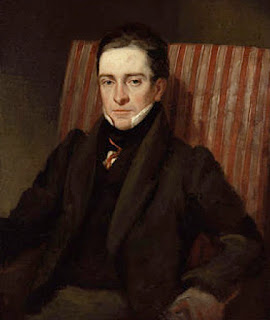Dearest Emily,
Well, as you know from your Christmas visit, we have made up " Pedigree names " for our two rescue Lab's, Milly and Marley.
So, henceforth- Miss Emilia Constance Beethoven de mieux Middleton, shall be Milly's.
and Mr Marley Jacob Eustace Offenbach de Middleton, shall be Marley's.
I'm sure you will agree these names are very suitable.
Mr Charles Lutwidge Dodgson also gave himself another name- Lewis Carroll.
His alter-ego, was suggested by the friend at 'Punch' who was assisting him in getting his 'Alice' manuscript published, and it was supposed to be an anacronym of his real name ( though there is an extra 'L' )
Mr Dodgson must have considered that this would give him some sort of pedigree too- as he had previously published his parodies and clever mathematically based barbs at people who displeased him, under his real name.
Now, with a pen-name, he could be such a clever prankster. Though he was published already, not a lot of notice had been taken of his clever jibes.
Encouraged by George Macdonald in particular and his children who enjoyed the tales, Dodgson really went to town with the preparation for this new 'Alice's Adventures Underground' manuscript.
He wrote to his friend at 'Punch', asking if he knew the illustrator John Tenniel well enough to persuade him to illustrate the work. Tenniel did agree, but finding Dodgson very hard to work with, did not want to work on the sequel- though he eventually complied. Tenniel roundly put down Dodgson as an extremely difficult man.
Dodgson curiously refused to admit he was also Lewis Carroll. He sent back any mail 'return to sender' that was addressed in this name.
He kept the duality close, only known to a select few.
A rather bizarre 'faux-pas' surrounds a rumour that following Queen Victoria's admiration of 'Alice', and request that the next book be dedicated to her- Dodgson sent her a dedicated 'An Elementary Treatise on Determinants', which I don't suppose the Monarch quite had in mind with her request...
Dodgson said nothing to address this matter for 30 odd years, only then refuting the truth of it- but as though tired of the whole charade, he mysteriously dropped the use of his Carroll pseudonym around this time also.
As we have discovered Emily, C.L.Dodgson was essentially a snobbish and aspiring social climber, who armed himself with a size-able talent for the 'new-fangled art of Photography'. This he believed would give him entree to society. Mostly, he wasn't asked twice.
He must have harboured some longings that Lewis Carroll would elevate the rather eccentric prankster's way of parodying and satirizing the luminaries he aspired entree to.
But it didn't.
Apparently no-one saw through him, or paid enough attention to do so. The Tennyson boys were probably too old as senior school boys, to bother looking at themselves as 'Tweedledum and Tweedledee'; Julia Margaret Cameron was wrapped up in the 'Idylls of the King' and then how much money she lost doing it- and then in her preparation for departing to Ceylon, and so it goes across the muse-board.
The massive commercial success of the two Carroll 'Alice' books, and Dodgson's Photographic skill and talent, still did not render him social standing, and he continued to live in protective institutionalisation at Oxford. He holidayed at Eastbourne, and preferred the company of children to adults.
Maybe the innocence and face-value aspect of childhood reflected respite from Dodgson's own sophisticated personality. His own warped intelligence and self-induced woundings, must have weighed heavily and could easily have produced a desire for fresh untainted company if only as relief for his own internal demands and complications.
His strange duality exhibited in his polite and continued dedications of his writings to Alice Liddell's Mother, Ina, though he had spitefully parodied her too as an over-bearing Mother in the character of 'Tabicat'.
Whatever he desired out of pretending he was not Lewis Carroll, except to those 'in the know' doesn't seem to have come off.
But, the fame of Lewis Carroll and indeed the social non-entity of C.L.Dodgson cover both paradigm and paradox.
150 odd years after the publication of 'Alice in Wonderland', it has never been out of fashion. Lewis Carroll along with the celebrated ignorer of Dodgson - Edward Lear- are co-joined as 'God-fathers of the Nonsense Genre'.
I wonder dear Em, what Dodgson would make of all that. Would it please him, or still frustrate him, that he was rather too clever for his own boots?
Lovely to see you this Christmas my dearest girl. Here is my latest favourite picture of you...
Your ever-loving Grand-mother, GiGi xxx



























